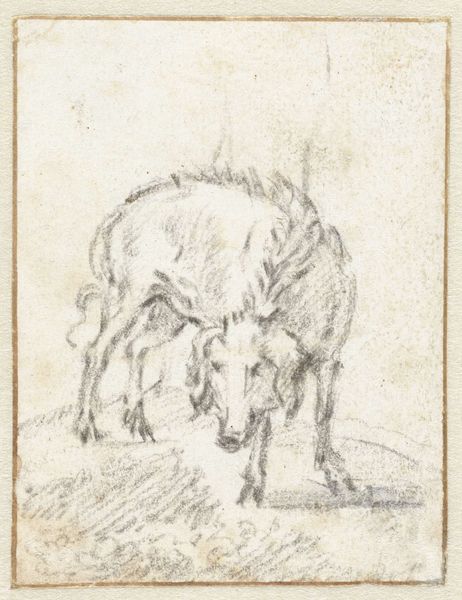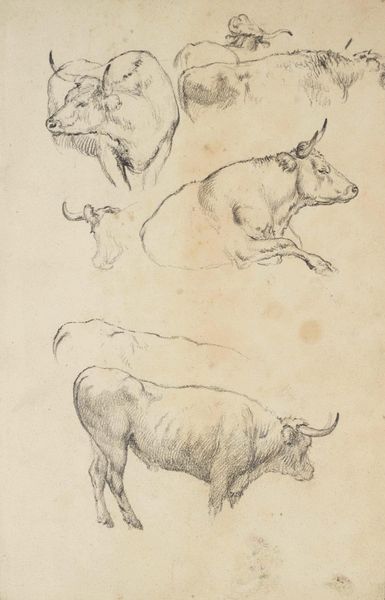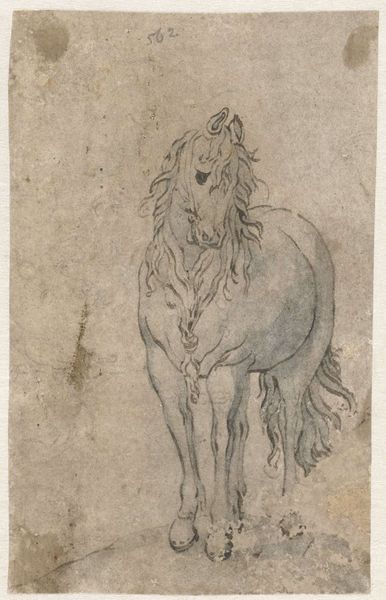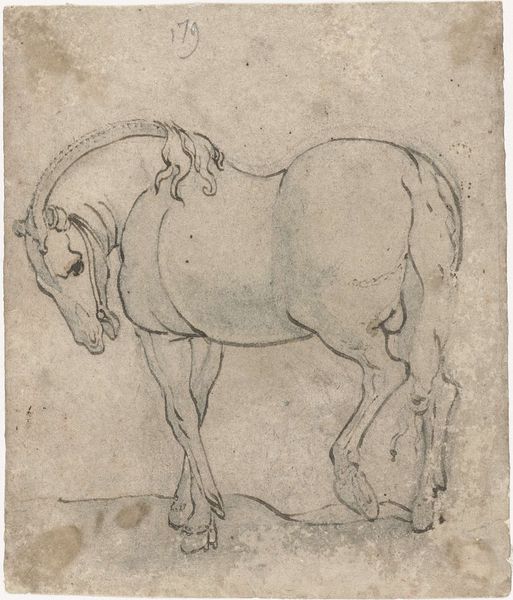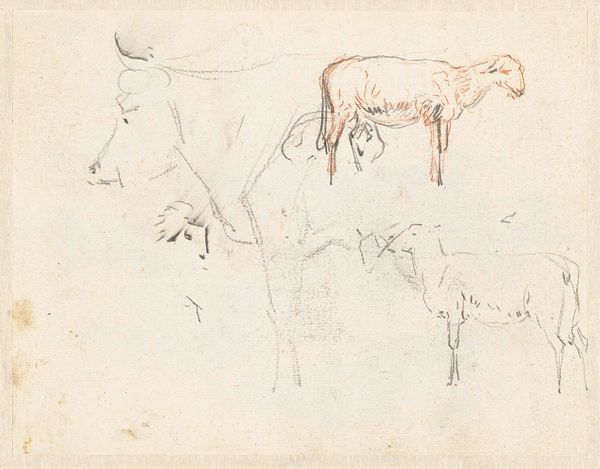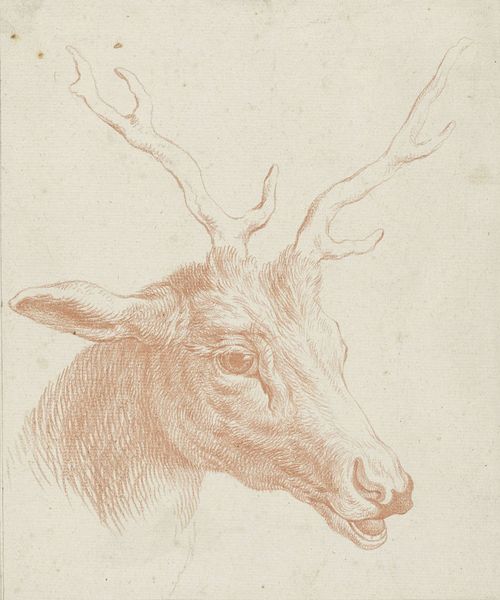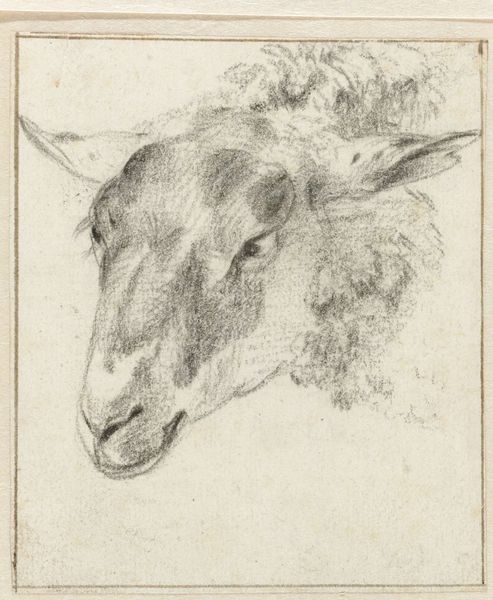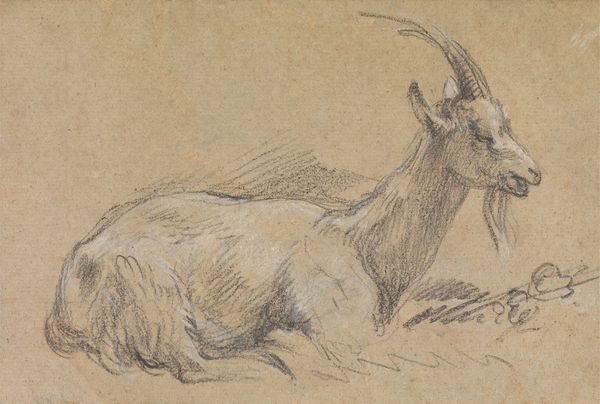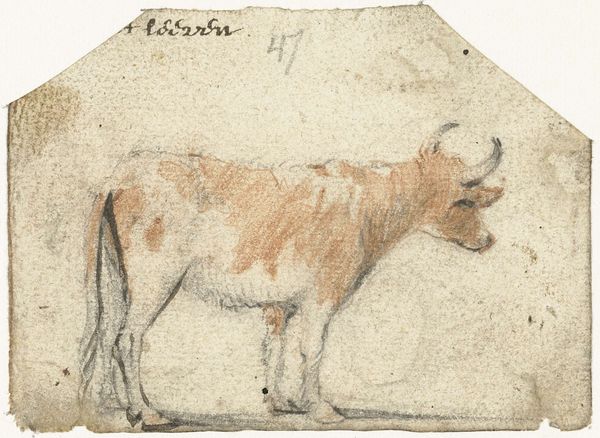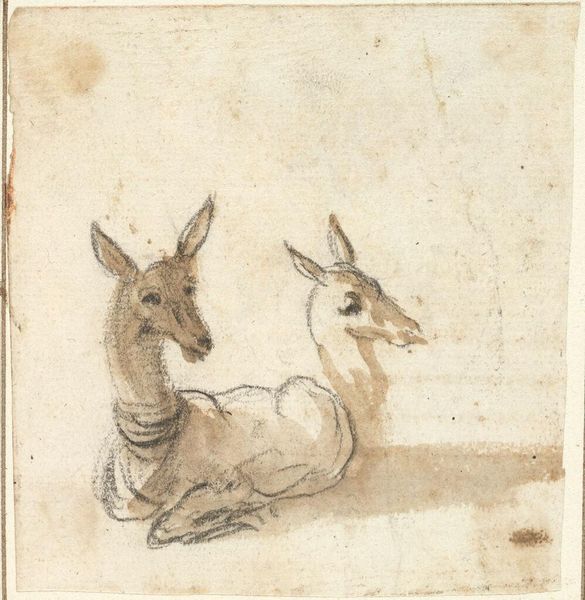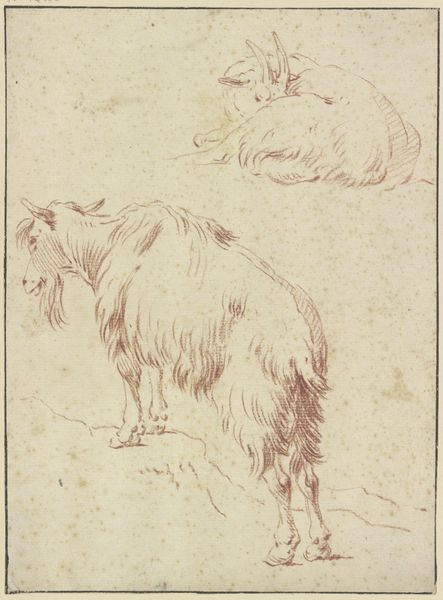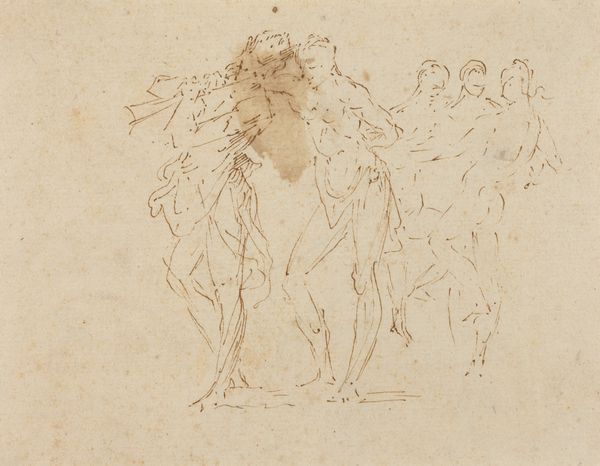
drawing, coloured-pencil, charcoal
#
portrait
#
drawing
#
coloured-pencil
#
baroque
#
animal
#
charcoal drawing
#
figuration
#
pencil drawing
#
coloured pencil
#
charcoal
Copyright: Public Domain: Artvee
Curator: Editor: Alright, next up we have "Goat" by Jacob Jordaens, a colored pencil and charcoal drawing from around 1657. I'm struck by the animal's averted gaze; its posture seems almost defiant, even a little humorous. How do you interpret this work? Curator: Well, let’s unpack that “humorous defiance.” Jordaens was a master of Baroque dynamism, but also of social commentary. What power dynamics do you see at play here? Consider the era, the rampant inequality, and the use of animals as symbols within those hierarchies. Does the goat represent something more than just, well, a goat? Editor: You're thinking maybe it's symbolic, standing in for some oppressed group? Or a critique of those in power? Because, yeah, there's something about its averted gaze. It isn’t submissive. Curator: Exactly. Baroque art often used allegory to address social and political issues. This seemingly simple drawing of a goat might be a commentary on class, privilege, or perhaps even resistance. Think about the context: 17th century Flanders, a society rigidly structured. How could Jordaens, through this seemingly harmless subject, be challenging the status quo? Editor: So, the choice of a "lowly" goat becomes significant. It’s like Jordaens is giving voice to the voiceless, using this animal to subvert expectations and make a statement about the social order. Curator: Precisely. And isn’t it interesting that he chose to portray the goat’s backside, denying the viewer the typical frontal, perhaps idealized view common in portraiture? What does it mean to literally turn one's back on established norms? Editor: Wow, I hadn't considered that. The "backside" view disrupts the usual power dynamic between the artist and the subject. Curator: It does. This perspective allows Jordaens to challenge our assumptions about representation and meaning. Editor: I see the drawing in a whole new light now. It's more than just a study of an animal; it's a powerful piece of social commentary. Thank you! Curator: Indeed. And by recognizing these layers of meaning, we enrich our understanding not just of art history but of the enduring power of art as a tool for social change.
Comments
No comments
Be the first to comment and join the conversation on the ultimate creative platform.
